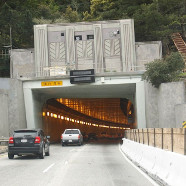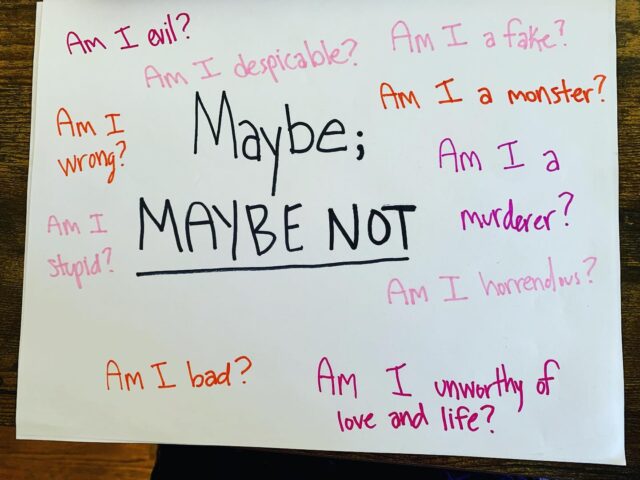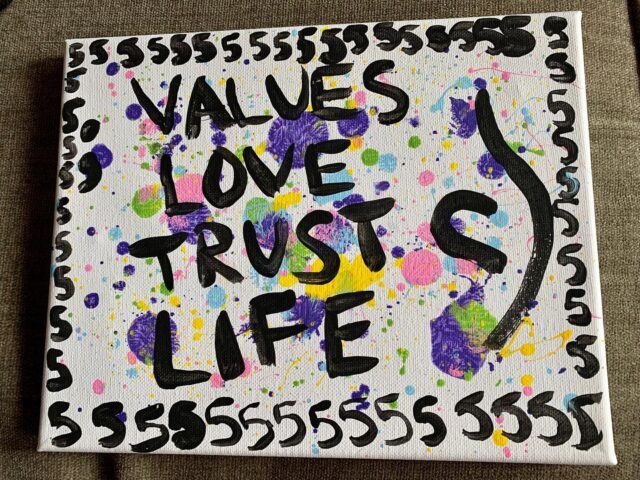
Written by “Sara,” age 34
Earlier this year, I was facing a lot of change in my life. I got married, quit my job, started consulting, got pregnant, and moved to the East Bay from San Francisco, all within the space of a few months. These were all exciting and positive changes for me, but they sparked an identity crisis. After 13 years of living in the city, I didn’t quite know who I was outside of it.
The panic disorder took over slowly. At first, I started having trouble making the calls I needed to make as a new consultant. I questioned my ability to sell my services to new clients as a representative of “me” and not a larger company. Then I had a panic attack on Bart. Then I had a panic attack on the freeway. Then I had a panic attack in a meeting. Pretty soon I found myself sitting in my new house and scared to do much, lest I have a panic attack.
I sought out the help of a CBT therapist because I was stuck, and didn’t know how to get moving again. In the past when panic disorder had visited my life (an unfortunate side effect of being violently mugged in the Mission years ago), I had been able to go on antidepressants and sort things out. Now being pregnant, I knew I needed to conquer my fears meds-free.
When I first went to see my CBT therapist, I was very afraid. I couldn’t imagine facing a panic attack without my Xanax. The idea of actually putting myself in a situation where I might have a panic attack was unfathomable (and thus the reason why I was pretty much confined to my house). And yet, I knew that CBT and exposure therapy would bring me face-to-face with panic again and again.
Luckily, we started slowly. My CBT therapist practices ACT (Acceptance and Commitment Therapy), so we first set out to define my values when it comes to marriage, family, friendships, personal growth, leisure time, spirituality, etc. Clearly identifying my values gave me the courage to participate in the exposure therapy to come – it helped me to remember who I was and what I was fighting for.
My CBT therapist started teaching me mindfulness techniques to retrain my brain to relate to fear symptoms differently. Every week, we started off our appointment with a mindfulness session. As negative thoughts or feelings arose, I was encouraged to just label them and let them disappear naturally, rather than judging them. This ability to bring curiosity and kindness to uncomfortable experiences would turn out to be key to my recovery.
Finally, it was time to face the panic and give exposure therapy a try. I was unbelievably nervous. We decided I would start out by driving the Caldecott tunnel – I had been avoiding it since having a panic attack inside of the tunnel on the way to my sister’s house. My therapist armed me with all sorts of mindfulness tools – such as breathing techniques and imaginal tapes – to give me the guts to drive the tunnel that first time.
The fastest way to decrease panic in a given situation is through “massing,” or staying in the exposure situation for as long as possible, so I decided I would drive the tunnel 50 times in one weekend. The first time I drove it, I wanted to jump out of my skin. I was dizzy and sweating, and the adrenalin was racing through my body. By the end of the weekend, my anxiety in the tunnel was mild. I was a believer – CBT really worked!
For the next six months, my therapist encouraged me to face a number of situations that gave me panic attacks – freeway driving, attending consulting meetings, driving the Bay Bridge, etc. I came to realize that exposure therapy was like “taking my medicine,” the more I willingly had panic attacks and saw that I could survive them, the more my brain registered stress symptoms as manageable. My panic and anxiety lessened, not only in the exposure situations, but in my day-to-day life.
My baby is now due in a week, and I can proudly say that I’ve kickstarted a solid consulting business and was able to successfully treat my panic disorder through CBT. I never would have had the courage to try CBT unless I was pregnant, but I’m so glad I did. It gave me the push I needed to face the panic and really see what it’s all about, meds-free. My brain now knows that despite fear: I am safe, I will survive, and even thrive.




